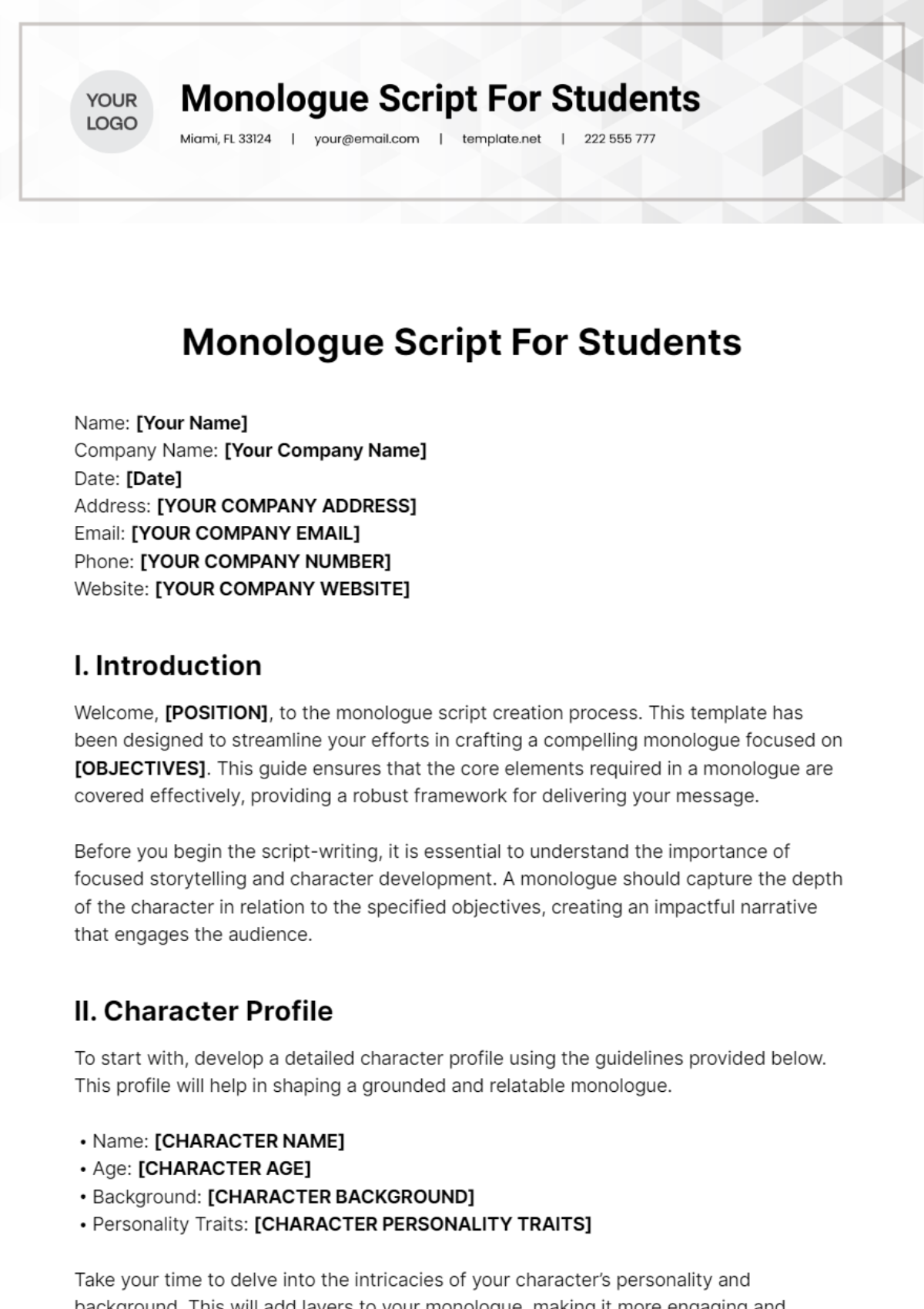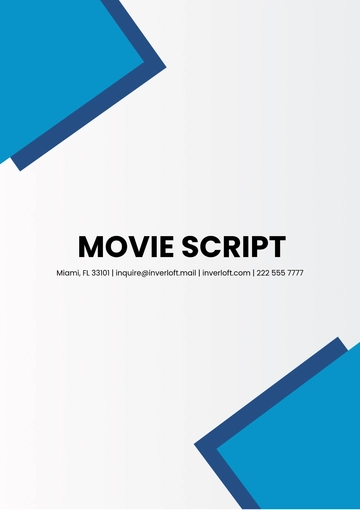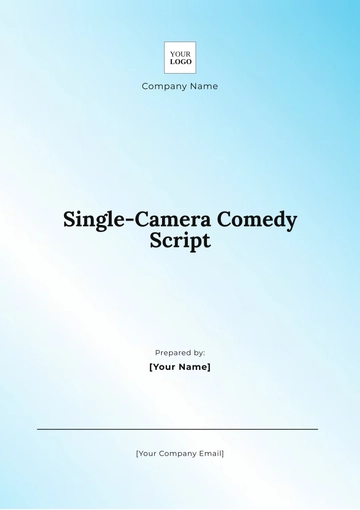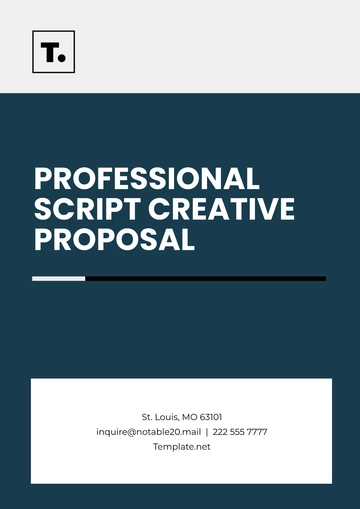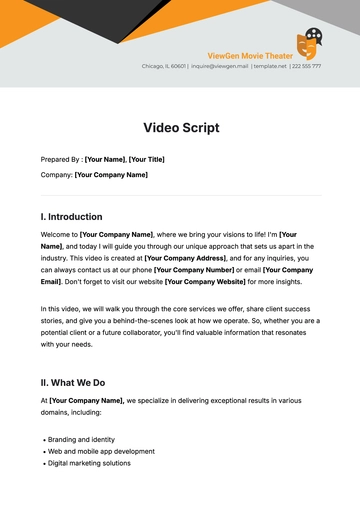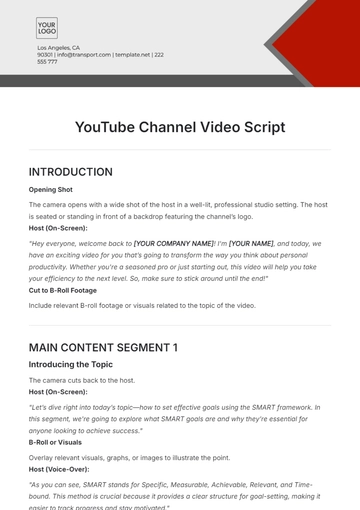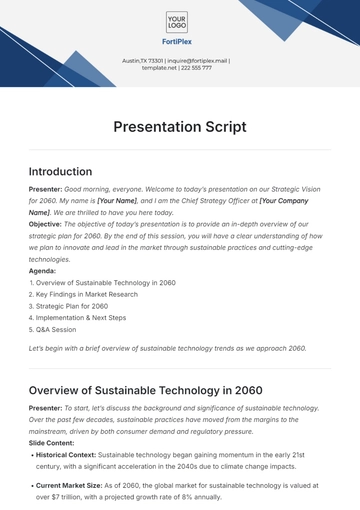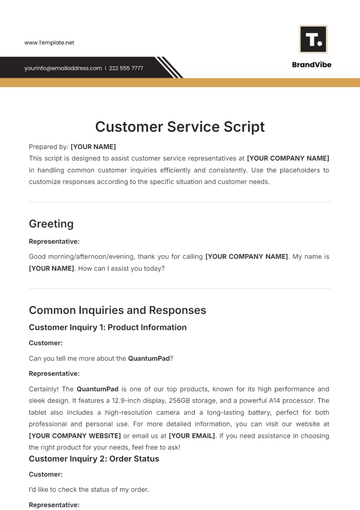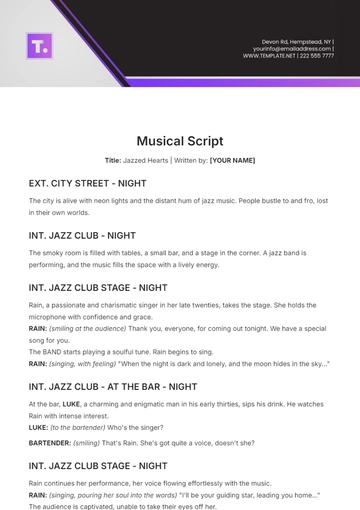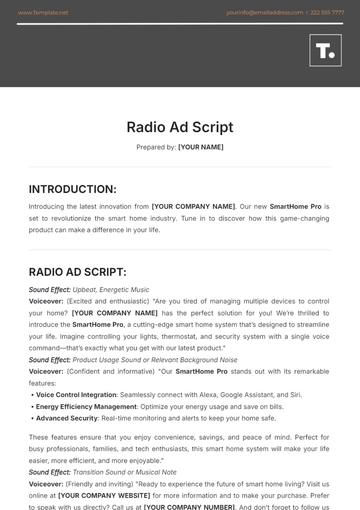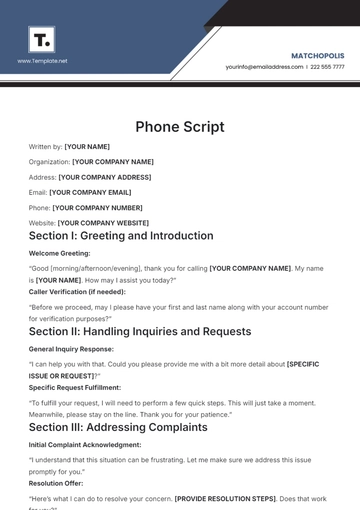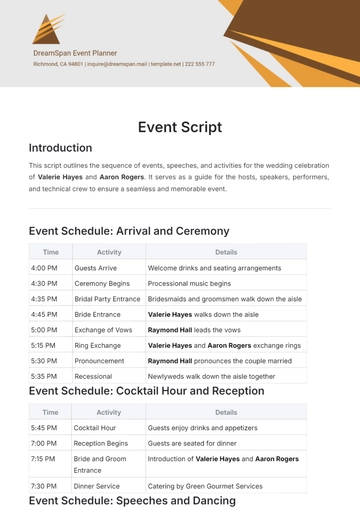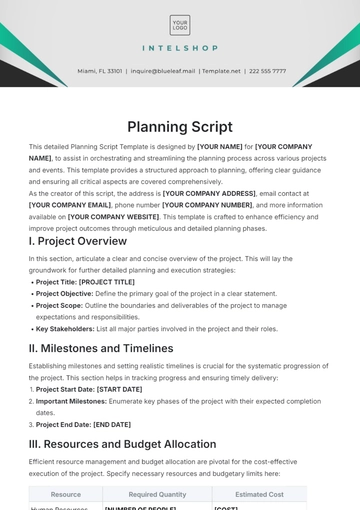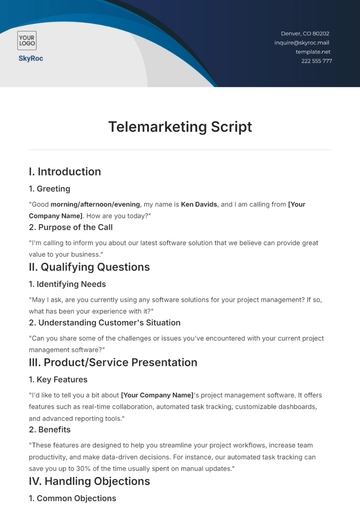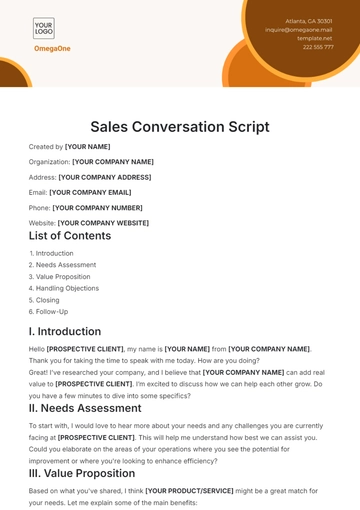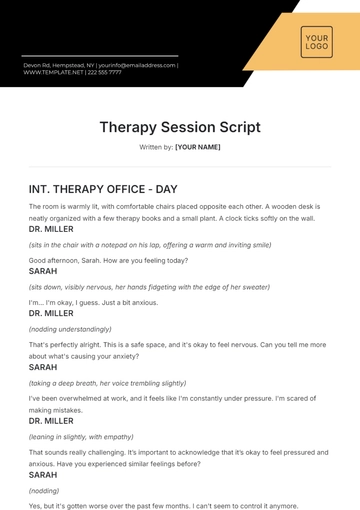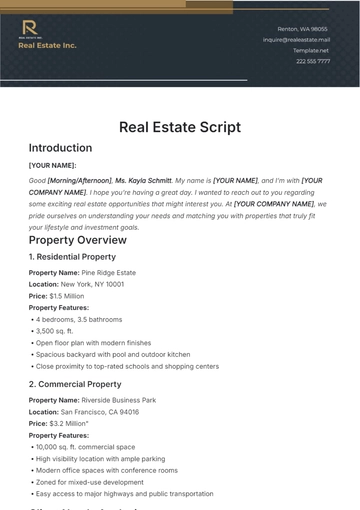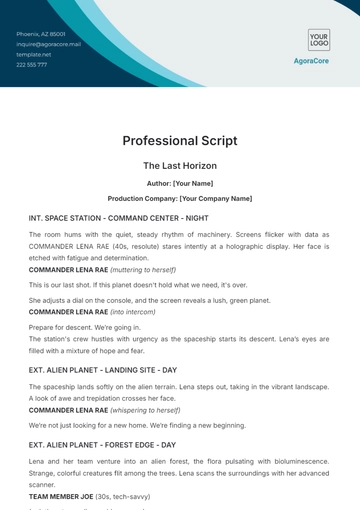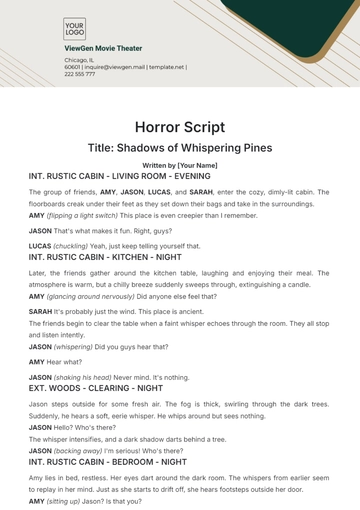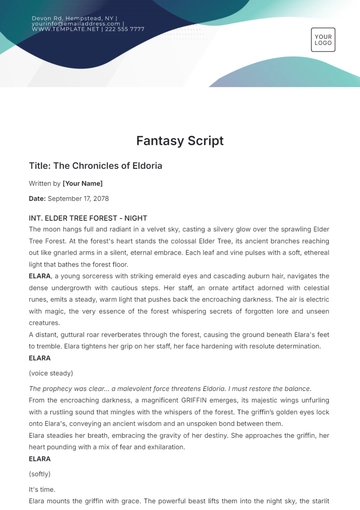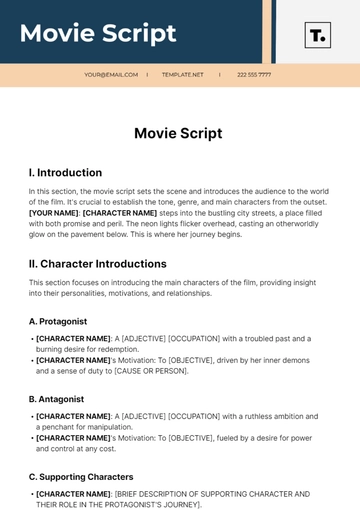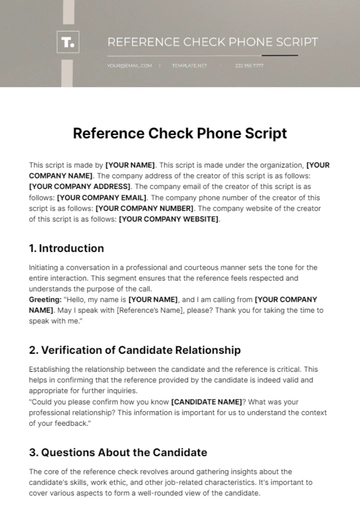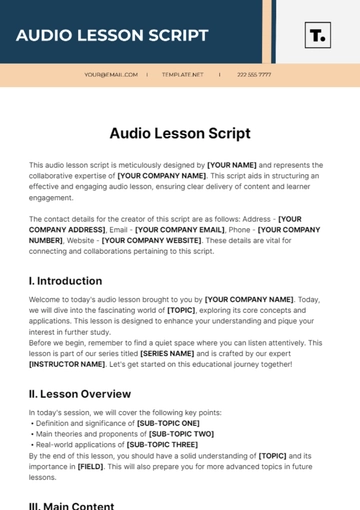Monologue Script For Students
Name: [Your Name]
Company Name: [Your Company Name]
Date: [Date]
Address: [YOUR COMPANY ADDRESS]
Email: [YOUR COMPANY EMAIL]
Phone: [YOUR COMPANY NUMBER]
Website: [YOUR COMPANY WEBSITE]
I. Introduction
Welcome, [POSITION], to the monologue script creation process. This template has been designed to streamline your efforts in crafting a compelling monologue focused on [OBJECTIVES]. This guide ensures that the core elements required in a monologue are covered effectively, providing a robust framework for delivering your message.
Before you begin the script-writing, it is essential to understand the importance of focused storytelling and character development. A monologue should capture the depth of the character in relation to the specified objectives, creating an impactful narrative that engages the audience.
II. Character Profile
To start with, develop a detailed character profile using the guidelines provided below. This profile will help in shaping a grounded and relatable monologue.
Take your time to delve into the intricacies of your character’s personality and background. This will add layers to your monologue, making it more engaging and relatable for the audience.
III. Setting the Scene
Setting plays a crucial role in monologues. It situates the narrative and provides context for the audience. Describe the setting in vivid details:
Make sure that the setting complements and enhances the story of the monologue. It should act as a silent narrator that adds depth to the narrative.
IV. Writing the Monologue
Now that the foundation has been set, start crafting the monologue. Begin with an engaging hook that captures the attention of your audience. Continue to develop the story, ensuring that each line reveals more about the character and propels the plot towards the climax.
Consider these points while writing:
Opening Line: [OPENING LINE]
Key Conflict: [KEY CONFLICT]
Climax: [CLIMAX]
Resolution or Conclusion: [CONCLUSION]
Each part of the monologue should seamlessly connect with one another to maintain the flow and keep the audience invested in the character’s journey.
V. Final Touches
Review the monologue for coherence, emotional impact, and relevance to the objectives. Edit to refine expressions and ensure the monologue resonates with the audience. Then, rehearse to perfect the timing and delivery.
Lastly, gather feedback from peers or mentors to gain insights into how the monologue might be perceived and make any necessary adjustments.
Script Templates @ Template.net
